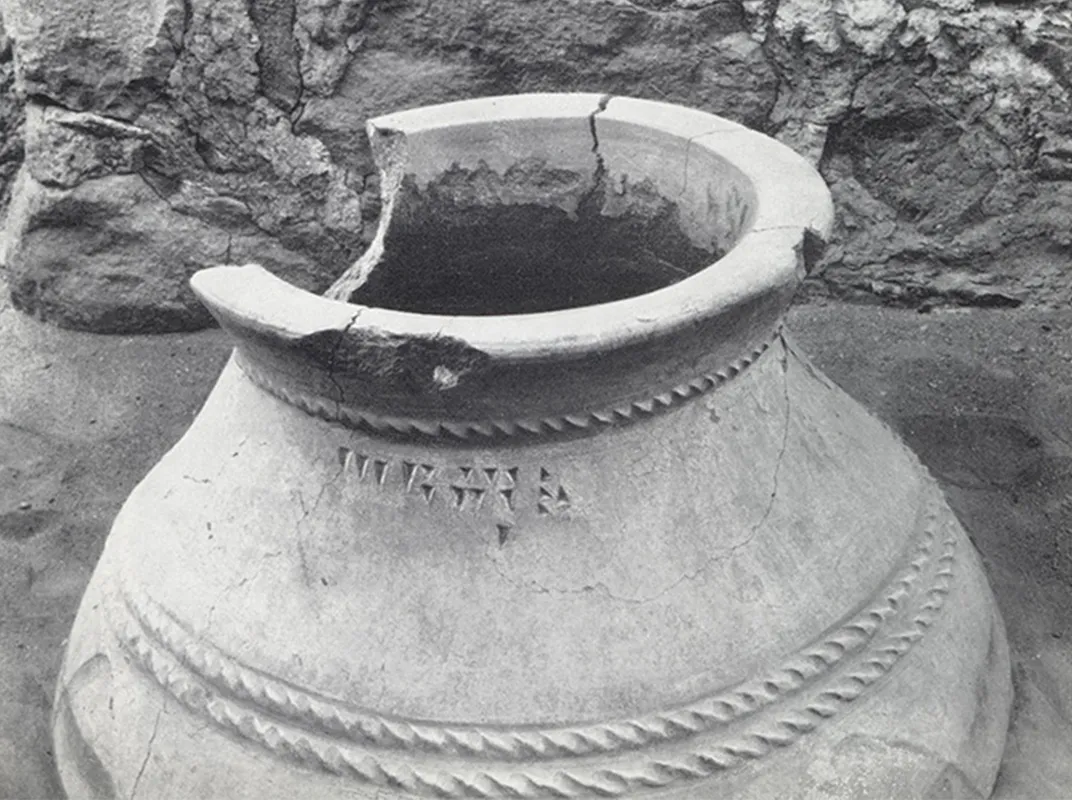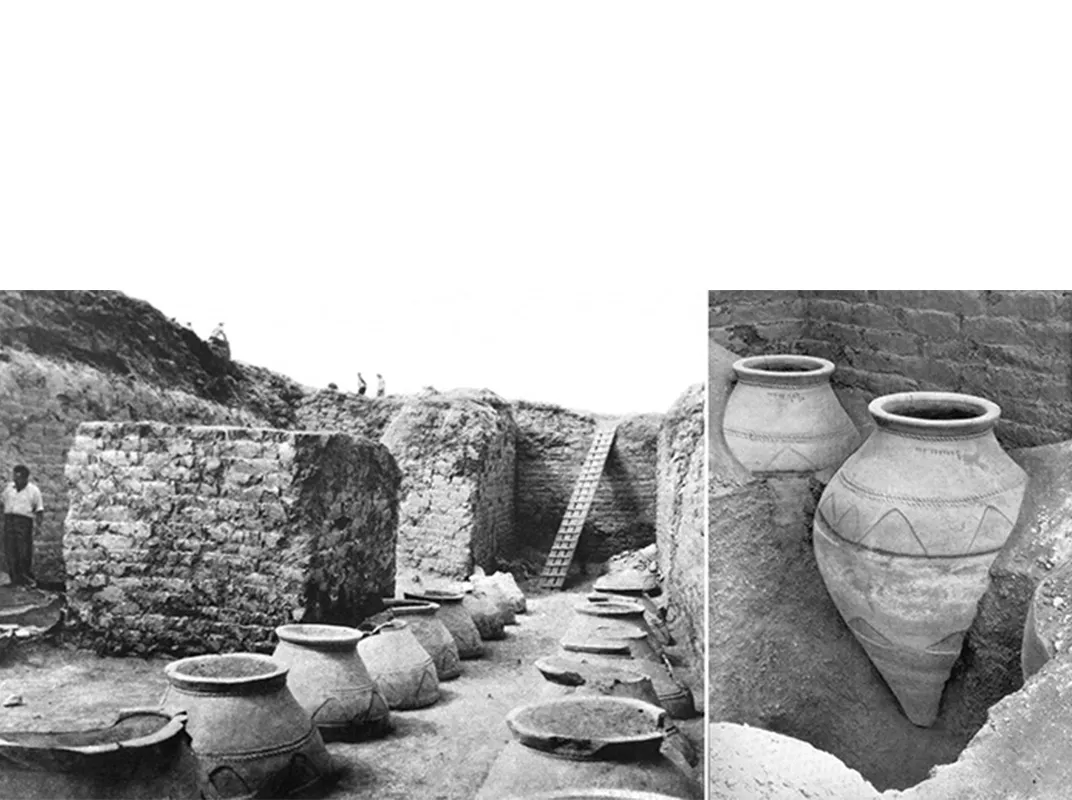Unearthing Armenia’s Giant, Ancient Earthenware
These 240-gallon clay karases, crucial to the early development of winemaking, once held enormous value
/https://tf-cmsv2-smithsonianmag-media.s3.amazonaws.com/filer/1e/da/1eda4521-8a04-4a64-a80a-1c990361d505/asli-saghatelyan-wr.jpg)
This is the first article in a two-part series on Armenian karases. Read part two.
The enormous 240-gallon clay vessel, or karas, was nestled snugly in the corner of Asli Saghatelyan’s maran (storage cellar) in Chiva, a modest village in the Vayots Dzor region of Armenia. Asli and her son Mushegh watched with curious faces as I beheld their egg-shaped earthenware with awe.
The Saghatelyans no longer use this forlorn family heirloom, the girth of which exceeds the width of the door’s frame. It belonged to the family’s now-deceased patriarch, who used it to make homemade wine through a traditional process of fermentation and storage that people in this region have used for millennia. At one point, the family possessed at least five of them. Today only two are still intact.
This scene of giant karases, now sitting dusty and idle for decades in the basements of Armenia’s villagers, is a strangely common one in this particular region. The villagers don’t use them anymore, but the pots are so large they cannot be transported it out of their homes without the karas being smashed, or the wall of the basement being demo-ed. You can imagine the residents of Chiva rarely choose the latter option.
Not even a half hour into my visit, a neighbor stopped by to investigate my foreign presence in the village. “Oh, that’s what you’re looking for? We also have karases. They’re in our basement!”
The karases I saw that day date back to mid-twentieth century, but it’s not the age of the Minasyans’ and the Saghatelyans’ pots that made them so interesting to me. It’s the threat of their extinction in the region. Karases have had an uninterrupted six millennia presence in this part of the world, but only in the last few decades, they’ve fallen into obscurity.
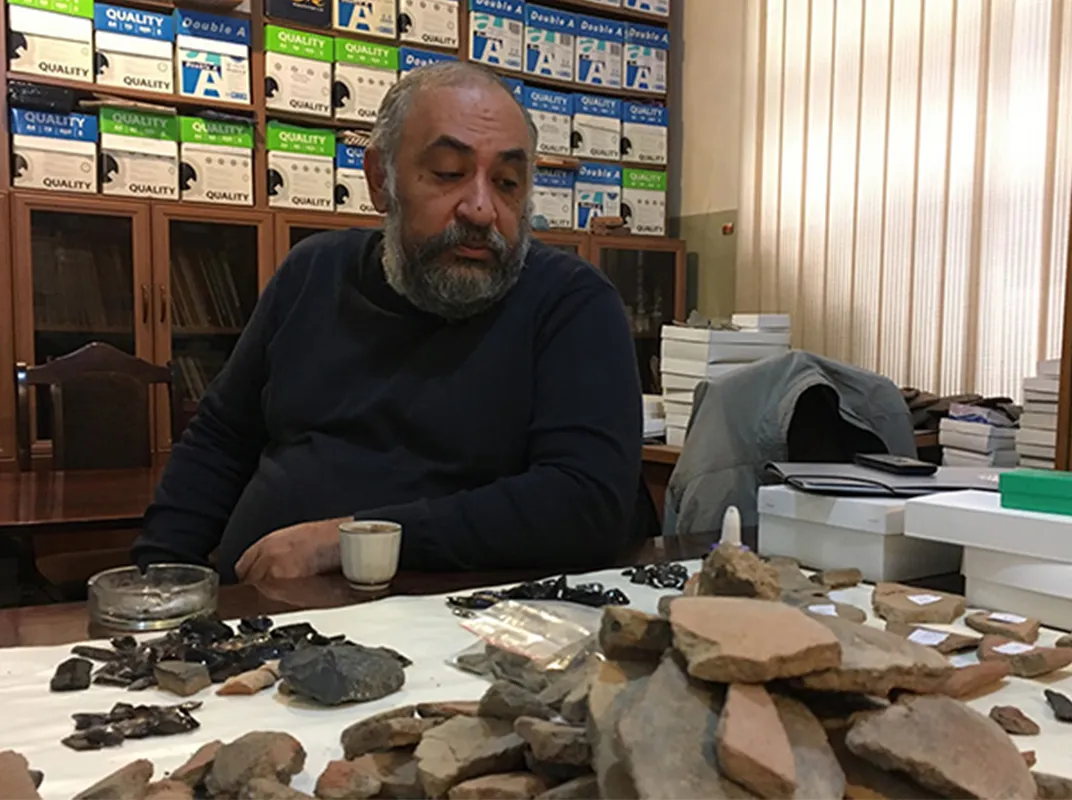
Boris Gasparyan, a researcher at the Institute for Archaeology and Ethnography (IAE) in Armenia’s National Academy of Sciences, who led the excavations at the now-famous Areni-1 cave complex, has spent much time pondering the phenomenon of karas.
His interest intensified after he and his team discovered one of the world’s oldest wine production facilities in Areni-1. The numerous clay pots uncovered at the site once held some of mankind’s earliest experiments in viticulture. Chemical analyses even allowed researchers to speculate that ancient peoples mixed wine and blood together, leading wine expert Tim Atkin to joke in 2012 when he visited the site, that it “gives a whole new meaning to the term ‘full-bodied wine.’”
The value of karases across millennia appears to be, judging by its morphology and physical evolution, defined primarily by their intimate relationship to wine. Gasparyan says that any other functions were secondary, though “people used them even as coffins!”
In the first millennium BC, in the Kingdom of Van (also known as the Urartian Kingdom), karases reached their peak—in size, technology, and quality. Wine had become a valuable commercial commodity since many neighboring empires lacked the ideal climates for growing grapes. “We can even compare wine to U.S. dollars,” Gasparyan said. “Wine was circulating. It had great value. It was money. It was not only for consumption.”
Urartian kings grew desperate to develop methods of storing their precious commodity in large quantities. Experimenting with clay forms, which had been the material used for storing liquids in many ancient civilizations, provided an immediate solution. Pottery eventually developed into a separate and thriving industry in Urartu, second only to agriculture, and just as the history of wine is critical to understanding karas, its relationship to clay is just as important.
According to an article investigating Urartian karases by historians Leman Haupt and Grigor Khapantsyan in the 1950s, craftsmen would make six to ten karases simultaneously, using their fingers to shape ribs around the opening in an intricate process of coiling. But by far the most complicated element in making them, distinguishing the vessels from other clay-made instruments, was the process of drying and baking, which required an oven that could fit the enormous size of an Urartian karas.
Archaeological excavations in 1949 in the administrative and economic center of Teishebaini (Karmir Blour in Armenian) confirmed the advanced state of the Urartians’ karas making. In this famous site twenty minutes outside of Armenia’s capital, researchers found cellars containing rows and rows of hundreds of giant vessels, with cuneiform inscriptions on their rims indicating an intricate system of labelling volume. This cellar alone stored upward of 100,000 gallons of wine.
Karases maintained value long after Urartian rule. By the early twentieth century, one karas was worth an estimated three or four hundred rubles, about the cost of a cow. Since this was a large sum for most villagers, it was important to regulate an insurance policy. In 1184, Mkhitar Gosh devoted a chapter to karases in Datastanagirk, Armenia’s first legal document, providing purchasers with a clause that reads eerily similar to a one-year warranty.
When Armenians moved toward industrial winemaking in the twentieth century, demand for these traditional storage vessels inevitably decreased. Mass production in Soviet factories meant wine was now available in grocery stores. Domestic winemaking—and by association, karases—spiralled into obsolescence in Armenia’s developed areas.
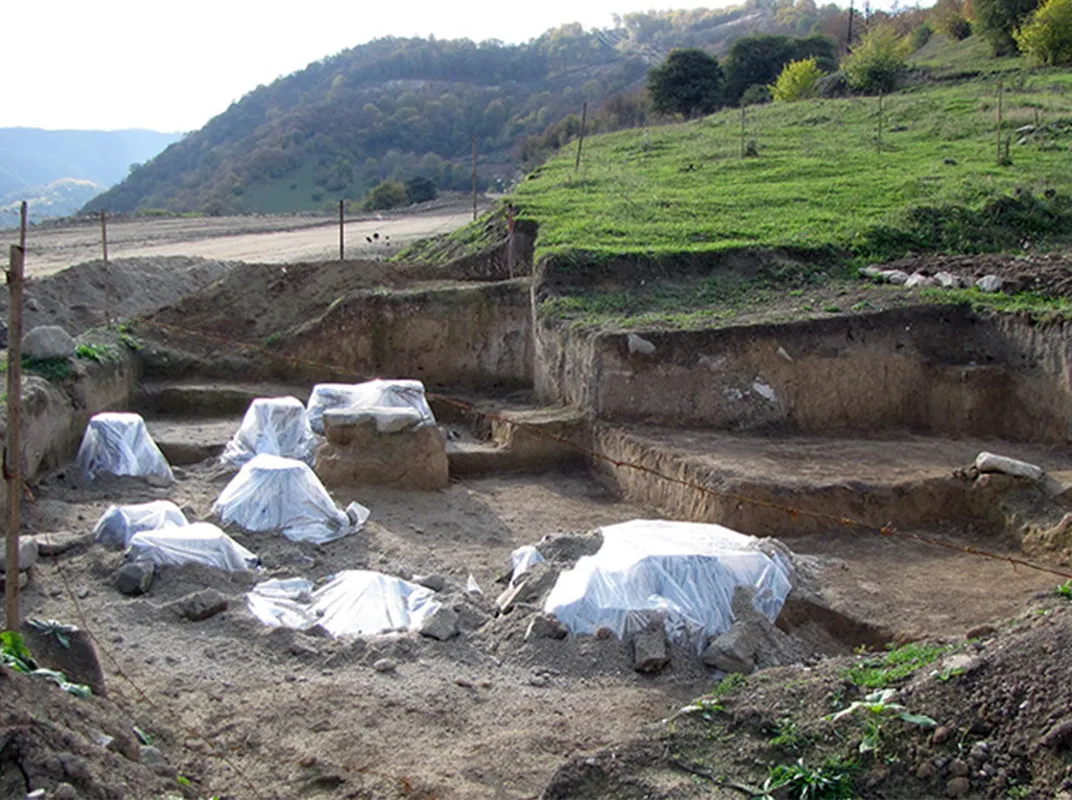
In Vayots Dzor and Armavir, regions historically tied to winemaking, rural communities continued using karas well into the 1990s, but the generation that used them is nearly gone. Asli Saghatelyan told me that after her father-in-law passed away, her children opted to use other methods of homemade wine production. “Different generations gained different interests. My son knows how to make wine using karas, but we prefer to use more modern technology, as the karas is quite a hassle.”
Professor Suren Hobosyan, head of the ethnography department at the IAE, can attest to those difficulties. In addition to the karas, he says there was an elaborate “kit” of vessels and instruments for domestic wine production. It takes forty days to make wine in the karas, and once it is sealed it will stay good for years. However, when you open it, you have to consume it very quickly—approximately ten to fifteen days—before it spoils.
For this reason, opening a karas became a ceremonial ritual. Many rural communities saved karas openings for weddings and other joyful events. Sometimes the opening was its own cause for celebration, and villagers would invite their friends and family to partake in the festivities.
Which brings us back to the last generation of giant egg-shaped pots waiting to be disposed of in villagers’ basements. Who, if anyone, still uses the karas today? How were Armenia’s Georgian neighbors able to retain this tradition and go on to gain international recognition for it? And, perhaps most importantly, is there anyone alive in Armenia who still knows how to make them?
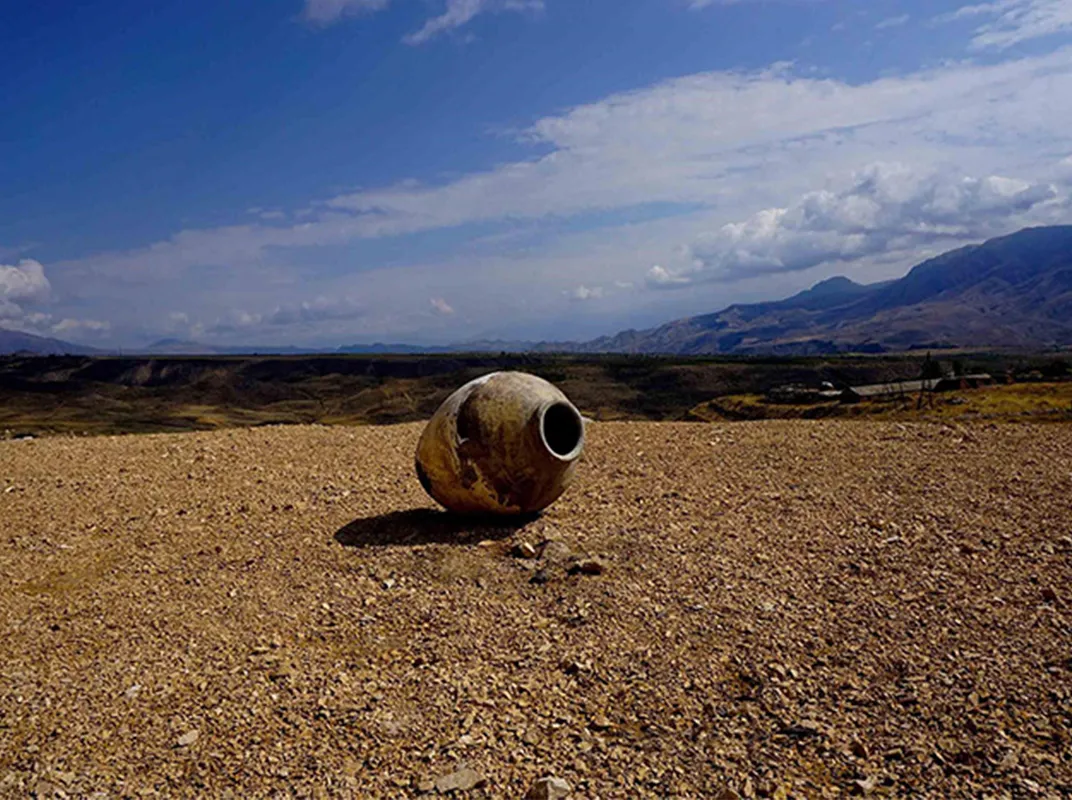
Karine Vann is a freelance writer based in Brooklyn and a storytelling contributor to My Armenia, where she writes about Armenia’s rich natural and cultural heritage.
Planning Your Next Trip?
Explore great travel deals
Smithsonian magazine participates in affiliate link advertising programs. If you purchase an item through these links, we receive a commission.

